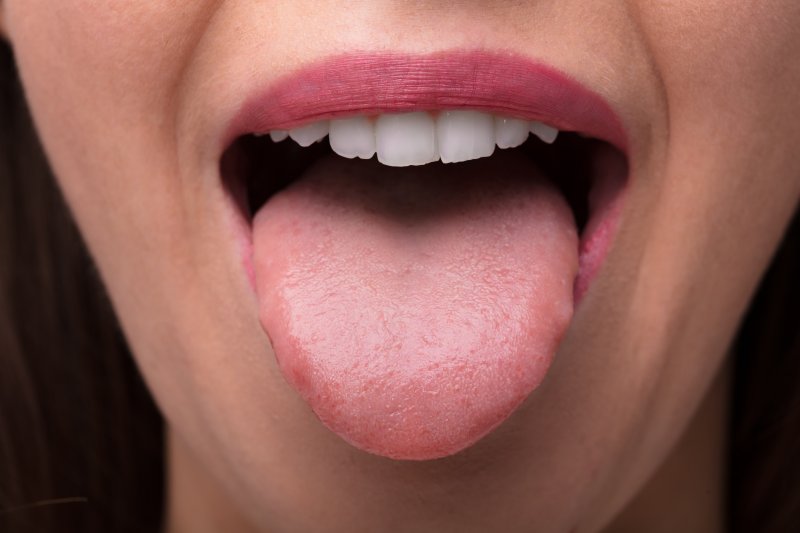
It’s unlikely that you’ve spent much time thinking about the color, shape, and texture of your tongue. Probably the only time you notice it is if you’ve eaten something that will turn it blue, red, or purple. But you may be surprised to learn that all of these characteristics can make a difference when it comes to better understanding your oral health. Your tongue can be a clear indicator of an infection or other problem existing with your mouth. A dentist in Jacksonville explains the differences in tongue color and what you should do if you need help.
What is Considered Healthy?
When looking at your tongue, if you notice it appears light or dark pink and has a thin, white coating, you’ll be pleased to know it is healthy. If you’re wondering whether the small bumps along the tops and sides are normal, don’t worry, they are. Known as papillae, they cause your tongue to be coarse, which is helpful when consuming various foods.
How to Know if a Problem Exists
If you’re hoping to see a healthy tongue but instead are met with one that appears a different color, you may be facing a potentially serious problem within your oral cavity. Below is an explanation of what might be happening should you notice your tongue’s color is anything but pink:
- Black: Too much keratin, which is a protein found in the skin, hair, and nails, can turn a tongue black and become hairy. This can occur because of poor oral hygiene, tobacco use or smoking, certain antibiotics, drinking dark-colored beverages, or receiving radiation.
- White: White patches often mean there is a fungal infection (i.e. oral thrush). This can cause thick, white, or red patches, and you may have difficulty eating or swallowing. It’s also possible your tongue can be white because of leukoplakia, a condition caused by smoking, or lichen planus, which is a rash.
- Red: If your tongue is red with bumps, you may have a Vitamin B deficiency or scarlet fever. You may also be experiencing an allergic reaction to a particular medication or food item. It’s also linked to inflammation of the tongue.
- Gray: If you have eczema, your tongue may turn gray or pale. Also, if you have what is known as geographic tongue, this rare disorder can cause gray-white spots to develop as well as white lines, similar in appearance to a map.
- Yellow: Should your tongue appear yellow, you may be experiencing a bacterial growth that typically is the result of poor oral hygiene and dry mouth.
- Orange: Everything from antibiotics, certain foods (those high in beta carotene), dry mouth, and poor oral hygiene can turn a tongue orange.
- Green: If there is a buildup of bacteria in your mouth, you may notice your tongue turning green. The causes are many but some of the most common include oral thrush, antibiotics, oral cancer, throat or upper respiratory infection, or even certain supplements.
- Blue: Unless you are known to have eczema, which can also turn your tongue blue, there may be a lack of oxygen in your blood that is causing your tongue to turn this particular color. If this happens, you must seek immediate medical attention.
When to See a Doctor
While most changes that occur in the tongue are harmless, should the color, texture, and shape remain for more than a few days, you’ll want to schedule an appointment to see your doctor. It is important you have it examined to determine if there is an infection, and if so, receive treatment to mitigate the problem before it worsens.
Your tongue can say a lot about your oral health, so make sure when performing your regular oral hygiene routine to keep this area clean and free of bacteria, and you’ll enjoy a healthier, fresher smile.
About the Author
Dr. Matthew Nawrocki earned his Bachelor of Science degree in chemistry from the University of Florida. From there, he went on to attend the University of Florida College of Dentistry, earning a Doctor of Dental Medicine degree. He and his colleagues at Jacksonville Dental Specialists are pleased to provide preventive services to help you maintain a healthier smile. From regular dental checkups and cleanings to offering valuable patient education designed to curb bad habits and improve oral hygiene practices at home, Dr. Nawrocki is ready to help you get your smile back on track. To find out how we can help you achieve healthier teeth and gums, contact us at (904) 683-4781.
